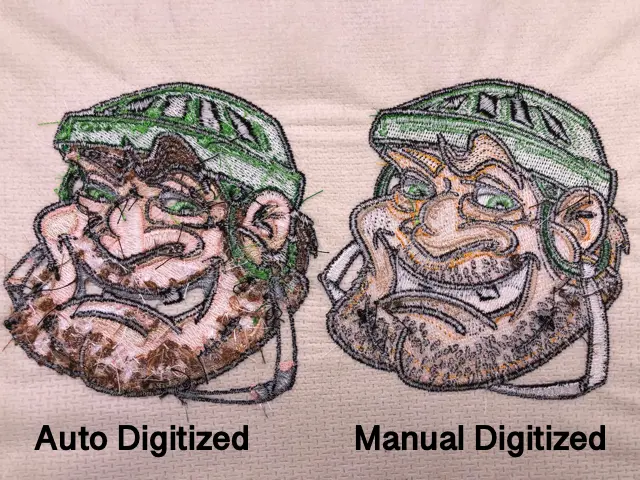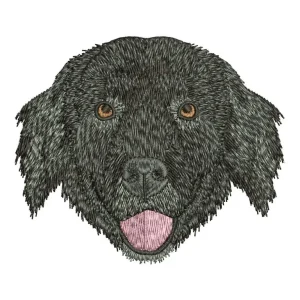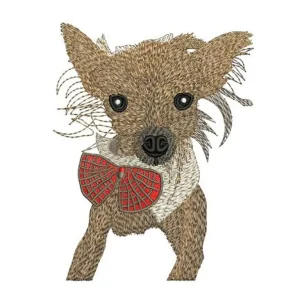AI is transforming every industry, from how we write emails to how we drive cars. With tools like ChatGPT and self-driving technology becoming part of everyday life, many people are asking a new question: Can AI replace embroidery digitizers?
Embroidery digitizing is the process of converting artwork or logos into an embroidery file format that an embroidery machine can understand and stitch. It is not just a technical step. It requires creativity, attention to detail, and a strong understanding of how stitches behave on different fabrics.
As AI becomes more advanced, interest in AI-powered embroidery software is growing. Some programs now offer auto-digitizing features that promise quick results with minimal effort. But are these tools accurate or reliable enough for professional work?
In this blog, we will explore whether AI can truly take over this creative and technical craft. We will look at how far the technology has come, what it can and cannot do, and whether skilled digitizers still have the upper hand in delivering the best possible results.
What Is Embroidery Digitizing?
Embroidery digitizing is the process of converting a regular image, logo, or artwork into an embroidery file format that an embroidery machine can read. This file tells the machine exactly how to stitch the design on fabric, including the direction, type, and sequence of every stitch.
Why Embroidery Digitizing Is Crucial for the Textile Industry
Embroidery Digitizing plays a key role in machine embroidery and is essential for achieving high-quality, professional results. It involves selecting the correct file format, setting underlay stitches for support, adjusting stitch density for smooth coverage, and planning the stitch path to reduce thread breaks and wasted time.
A well-digitized file ensures that the design runs smoothly on the machine and looks perfect on the final product. On the other hand, a poorly digitized design can cause thread breakage, fabric puckering, misaligned elements, and an overall unprofessional look. For the textile industry, where quality and efficiency matter, proper digitizing directly affects product value, production speed, and customer satisfaction. This is why skilled digitizing is considered the backbone of machine embroidery.
What AI can Do as for now in Embroidery Digitizing
AI Features in Paid Software
Artificial Intelligence is slowly being introduced into embroidery digitizing through auto-digitizing features available in some paid software programs like Wilcom Embroidery Studio and Ricoma Chroma. These tools aim to make the process faster by automatically converting artwork into stitch files with minimal user input. They offer quick solutions for basic shapes and fill areas, often useful for simple designs.
Speeding up repetitive tasks
AI helps by handling the repetitive parts of digitizing more quickly. For example, it can automatically add underlay stitches, detect the colors in an image, or suggest the right type of stitch. This saves time and reduces manual effort.
Basic preview and simulation
AI can create a digital preview that looks very similar to real thread on fabric. This lets you see how the final embroidery will look before you actually stitch it.
The problems with Free AI Software
As of now, there is no free AI embroidery digitizing software that can generate files suitable for production without the learning curve or hidden charges . Free tools may offer basic conversions, but they lack the depth and precision needed for professional results. They do not give users control over critical factors such as stitch type, push-pull compensation, underlay settings.
Interpret design intent
AI cannot understand what the customer really wants. It does not know fabric behavior, texture preferences, or machine limitations the way a human digitizer does.
Handle complex designs
AI struggles with advanced designs like 3D puff, gradients, fine details, or specialty threads. These still need human skill and judgment.
Fix issues after sampling
AI cannot adjust a file after a test stitch. Problems like thread breaks, density issues, or pull compensation must be corrected by an experienced digitizer.
Communicate with clients
AI cannot talk to clients, follow special instructions, or handle multiple revisions. Human interaction is still necessary for custom orders.
Why That Matters
These missing elements are essential for ensuring smooth stitching, fabric stability, and a clean final appearance. Without them, designs often lead to thread breakage, misalignment, and poor sew outs. This is why skilled human digitizers still remain essential for producing quality embroidery files that perform well on any fabric.
Why Manual Digitizing Still Delivers the Best Results
Precision and Creativity You Can’t Automate
Manual digitizing is still the gold standard because it combines precision, creativity, and logic in a way that AI cannot replicate. A skilled human digitizer carefully plans each element of the design, considering how it will interact with the fabric, thread, and machine. Every stitch is placed with intention, and decisions are based on years of hands-on experience, not just pattern recognition.
Real-World Examples That Require Human Expertise
Consider a logo being embroidered on a structured cap. A human digitizer will use center-out sequencing to prevent puckering and keep the design aligned. For a 3D puff design, an expert knows how to build up the column stitches with proper density and direction to give the raised effect without damaging the fabric. These are complex adjustments that AI cannot make on its own.
Understanding of Materials and Machines
Human digitizers understand how different fabrics react under the needle, whether it’s stretchy cotton, thick canvas, or delicate satin. They also account for machine capabilities, thread types, hooping methods, and the specific preferences of the customer. AI lacks this context and flexibility.
Sew out Quality Still Matters Most
At the end of the day, what matters is how the design looks when it is stitched out. Even the most advanced AI tools often require manual correction to meet basic production standards. Without human adjustments, AI-generated files can result in thread breaks, uneven fills, or distorted shapes.
More Than Just a File
Manual digitizing is not just about making a stitch file. It is about crafting a final product that looks clean, runs smoothly on the machine, and meets professional standards. That level of quality still requires human skill and attention to detail.
Why Manual Digitizing Still Delivers the Best Results
Precision and Creativity That AI Can’t Match
Manual digitizing stands out because it blends technical accuracy with creative judgment. Skilled human digitizers know how to place each stitch for the best result, using logic and experience to handle design challenges. AI follows fixed rules, but human digitizers think critically. They decide when to shorten stitches, adjust density, or change angles to suit a specific fabric or machine.
Examples That Prove the Difference
Some real-world jobs demand a human touch. A logo on a cap needs center-out sequencing to avoid puckering along the seam. AI often fails to apply this correctly. Similarly, a 3D puff design requires careful planning with column stitch adjustments and layering to create the raised effect. If not done properly, the puff either flattens out or breaks through the fabric.
As one Reddit user shared on r/MachineEmbroidery:
“Tried using auto-digitizing for a puff patch and it was a disaster. Ended up hand-digitizing it from scratch. AI doesn’t get foam thickness or stitch direction right.”
Experience with Fabric, Thread, and Machines
A professional digitizer understands how denim behaves differently than fleece, or how metallic thread reacts under high-speed stitching. AI doesn’t know whether a design is going on a t-shirt or a knit beanie. It cannot adjust based on hooping tension or machine type. One comment on r/Embroidery put it well:
“AI doesn’t know your fabric. It just sees pixels. That’s why manual tweaking always wins.”
Sewout Quality Is Still the Final Test
No matter how fast or advanced software becomes, the final test is always the sewout. Even experienced users on Reddit admit they run test stitch-outs and adjust files manually. AI-generated files often fail here, leading to broken threads, jagged lines, or unbalanced fills.
More Than Just Code
Manual digitizing is not just about converting an image to stitches. It’s about building a reliable, beautiful, and fabric-specific embroidery design. It is craftsmanship. Until AI can match that kind of care, human digitizers remain irreplaceable.
The Future of Embroidery Digitizing: Human-AI Collaboration
AI Is Getting Smarter
AI is advancing quickly and already replacing routine jobs in industries like customer service, editing, and logistics. In embroidery digitizing, AI tools are starting to automate simple, repetitive steps like color separation, edge detection, and basic shape fills. These features are especially helpful for beginners or for speeding up bulk work.
Timeline: When Will AI “Take Over”?
| Period | AI Capability | Human Role |
|---|---|---|
| 2025–2027 | Fast improvements in basic auto-digitizing, especially for stock logos and vector input | Human digitizers will refine AI outputs or handle complex cases |
| 2028–2030 | AI may handle 80% of simple jobs, especially in large print-on-demand setups | Freelancers and companies who focus only on basic logos may feel the squeeze |
| Beyond 2030 | AI + robotics may handle some sampling feedback loops and integrate with machines | But custom work, brand logos, creative designs, and support will still need humans |
AI as a Tool, Not a Replacement
Despite these improvements, AI is not ready to take over the full digitizing process. Skilled human digitizers still need to step in to fix pathing, stitch density, underlays, and other critical settings that affect how a design will sew out. Many professionals now use AI-generated outlines as a starting point, then fine-tune them manually for the best results.
As one Reddit user put it:
“AI might be able to trace a design, but it has no clue how that thread reacts on stretch fabric. That’s where we come in.”
Training the Next Generation
In the future, training programs may include AI-assisted platforms to help new digitizers learn faster. But even with advanced software, real expertise will remain essential, especially for complex jobs, custom designs, and professional embroidery shops.
What Lies Ahead
The role of the digitizer will shift more toward design oversight, creativity, and customer communication. AI will handle the boring parts, while humans focus on quality and customization. A full AI takeover is unlikely anytime soon. Experts suggest it could take 10 to 15 years for AI to come close to replacing skilled digitizers, and even then, human input will still be needed for the best results.
Final Thoughts: Should You Wait for AI or Trust a Pro?
AI is certainly making progress and offers exciting possibilities in embroidery digitizing. It can handle some basic tasks and provide a quick starting point. But when it comes to real production work, especially for detailed logos, bulk orders, and high-end embroidery, AI is simply not ready to deliver the level of quality that businesses demand.
Relying solely on AI to save time can actually cost more in the long run. Poor stitch planning, wrong underlay settings, and incorrect pathing can lead to broken threads, machine downtime, and wasted fabric. These issues are common with AI-generated files that have not been manually reviewed or corrected.
For professional results, trusting an experienced human digitizer is still the safest and smartest choice. At Absolute Digitizing, our team focuses on precision, creativity, and customer satisfaction. We offer high-quality digitized files, fast turnaround, free edits until you’re happy, and prices starting as low as $10. Get your instant Free Quote Now!






